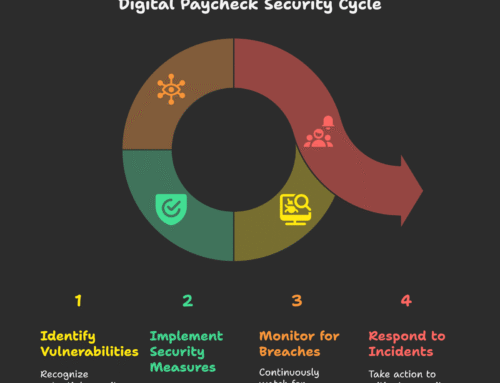Imagine being a licensed driver sent back to a driving school as a punishment for an infraction. You would have to sit through several long lessons studying the basics you already know until you arrive at the part you were negligent about and need to refine. As undesirable and unproductive as this may sound, this shocking level of disconnect is easily found in corporate training, where time must not be squandered. This is how employees feel when they are dragged through a course filled with “I already know this, though” modules.
In order to prevent learners from restudying what they have mastered and flying over the content they don’t understand, it is necessary to customize their learning path accordingly. That is where adaptive learning comes into play. The premise is simple, yet powerful: by analyzing learners’ progress and performance the system is able to find areas where they struggle and ways for them to engage with that content more effectively.
In practice, the algorithm will collect users’ data and use it to set new goals according to that individual learner’s progress. In addition to the goals, it can determine which of the available learning approaches is the most appropriate to suit that employee’s learning needs. With that in mind, here is how companies can profit from seeking an e-learning development company to deploy a personalized learning initiative.
It improves learning retention
While it is self-evident that humans aren’t all the same—and so they need different teaching approaches—it is still worthwhile to see how meaningful the impact of custom learning is. The Colorado Technical University experimented with its own adaptive learning platform in courses whose retention rate they aimed at improving, such as Accounting. The results were impressive beyond expectations: the pass rate rose by 27%, the final grades by 10%, and the course retention rate rose from 9% to a staggering 95%.
Feedback from the students who had access to their own custom-tailored learning path also helped assess the initiative; they felt they could truly rely on the program. The reason lies in the premise of adaptation itself: as the algorithm shapes the course through the learner’s data, the program looks more like them and focuses on the skills they need to master as opposed to being a generic pool of information they don’t know how to approach.
It can save you time (and money too)
“Time-consuming” is a description no decision maker likes, especially in training, where it means removing employees from work for a long time. Areas in which time off work can substantially affect the group’s performance and company’s revenue, such as skilled professionals and those who deal directly with clients, the longer they are away the bigger the damage. Naturally, then, efficient ways to speed training up are always welcome.
A study involving several American learning institutions found that when compared to the traditional course, experimental adaptive learning courseware resulted in students’ covering 33% more content in the same amount of time. Additionally, these students achieved gains around six times higher than the control group. Achieving more gains demands less time reviewing, and combined with time savings, it results in a notable productivity boost.
Since adaptive learning tailors the content to the learner’s needs, it speeds up the learning process. The traditional assumption underlying a standardized learning path is that everyone engaging with the course is equally unprepared and, therefore, needs to be given an equal amount of learning content.
But some of the employees undertaking the course might be knowledgeable about some areas of the job due to their experience. That is particularly true when onboarding newcomers; chances are they carry substantial know-how from their previous position and only need targeted skill enhancement and getting used to the company’s idiosyncrasies.
It closes (hidden) competency gaps
Training demands to make employees ready to deal with all the different challenges their job entails. Businesses need to ensure no skill lapses exist. You wouldn’t want your dentist to fetch their instruments and tell you, “I hope I can use these burs right. I didn’t learn that part very well at college.” However, no company is free from the absurdity of this scenario if it does not ensure its members are satisfactorily trained in the different skills they need to know.
However, it must be noted that your employee won’t necessarily realize they don’t know an important skill. This issue, called unconscious incompetence is what happens, for example, when a sales rep overrates their own knowledge about the product they sell—which makes them ineffective when presenting the product and/or vulnerable to further questions by clients. A study found that the number of employees unconsciously incompetent in indispensable areas is between 20% and 40%. Aren’t those numbers concerning? The algorithm behind adaptive learning uses actual data to customize the path, so no illusion of perceived knowledge remains.
It shows administrators (and employees) where to focus
Having access to different users’ data means knowing which areas to focus on. If, for instance, the safety procedures module is in a noticeably higher demand when compared to other areas, then it deserves extra attention and regularly updated content. That means also understanding what concepts are redundant or even over-represented. This awareness can be instrumental to reassess the course itself so as to ensure its relevance.
An extra benefit is that this same knowledge encourages learner self-criticism through diagnosis. Presenting an employee with a new personalized roadmap resulting from their current status shows them what their weaknesses are, as well as what approach suits them better. Self-aware employees can both study at the platform and further investigate the particular topics in which they lack competence by themselves if needed.
To sum it up
Adaptive learning is a momentous progress in corporate training because it considers learners’ undeniable particularities during the process. We don’t all learn similarly, nor are we equally leveled at the start, so why should the teaching process disregard individuality? Instead, it makes training more realistic by teaching what one needs to learn in less time through an optimal path. Isn’t that efficiency?
Photo: www.depositphotos.com







Leave A Comment